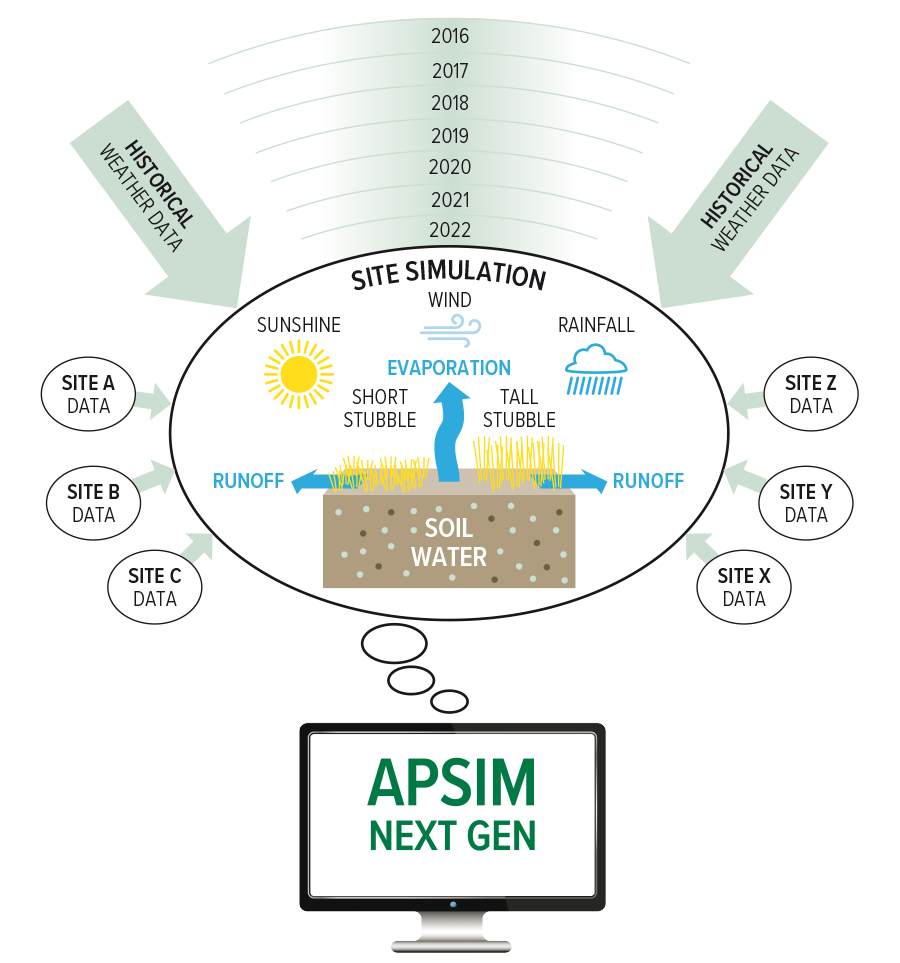The increased popularity of stripper headers has raised questions about potential impacts on soil moisture dynamics associated with the resulting taller standing stubble versus traditional cereal stubble, which is shorter and flatter.
With trials underway to assess soil impacts, data will soon be available to add to growers’ own observations about benefits and costs of this change in stubble architecture. However, the resulting information is limited to a handful of seasonal conditions at certain locations.
To complement these experimental and observational efforts, CSIRO is using its Agricultural Production Systems sIMulator (APSIM) computer model to build on this knowledge base. Algorithms are being developed that can extrapolate stubble architecture impacts to other sites (starting with southern NSW) and against 30 years of climate data.
The simulations are being run with the APSIM NextGen SWIM soil–water balance model that was released in October 2022. It has enhanced capabilities when it comes to predicting the near-surface water balance and temperature dynamics. It will be used to run comparisons of taller versus shorter retained stubble within multi-year cropping simulations.

Simulations using the APSIM NextGen SWIM soil–water balance model can run many, replicated virtual trials in order to assess impacts of taller stubble on soil water against broadscale variation in soils, rainfall and cloud cover. Source: Kirsten Verburg
Since APSIM includes crop growth models – as well as soil water, nitrogen and management models – it can account for the interacting effects of climate, environment and agronomic practices.
The simulations are designed to mimic real-world trials right down to having to consider the impact of possible confounding factors, such as different weed loads. Unlike real trials, however, the virtual experiments are less constrained by time, budget or location, allowing many more scenarios to be explored as well as sampling a wider range of seasonal conditions.
The project started in June 2022 with a preliminary focus on ensuring the model can accurately simulate experimental trial results. This model-verification step is still under way, with ongoing work focused on ensuring the model can dig down to impacts at the level of the stubble’s ‘microclimate’.
Information about stubble microclimates is being generated by a team from project partner Charles Sturt University, including Dr Philip Eberbach, Dr John Broster and Dr Ketema Zeleke as well as several honours students. This work has shown a dramatic drop of wind speed within the stubble can contribute to changes in evaporation and soil moisture.
Once fully calibrated, the modelling will host virtual trials, with discussions underway with project collaborators about the variables they would like to see included. This phase is expected to get underway in the second half of 2023.
The aim is to complement growers’ own observations about paddock impacts associated with adopting stripper headers and help build a broader understanding of where and when stripper headers are most beneficial.
More information: Kirsten Verburg, kirsten.verburg@csiro.au

























































